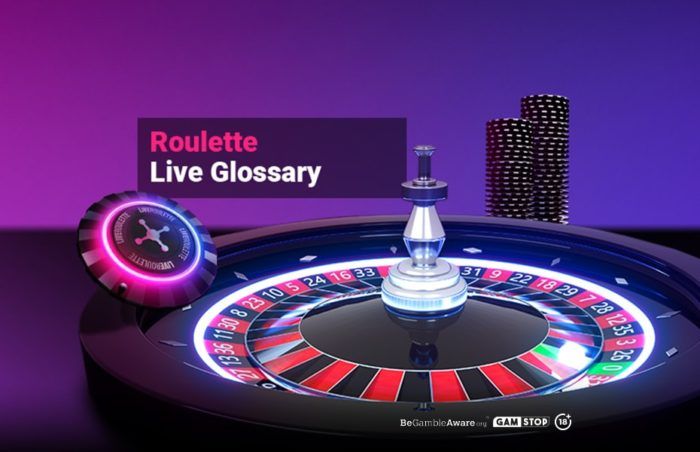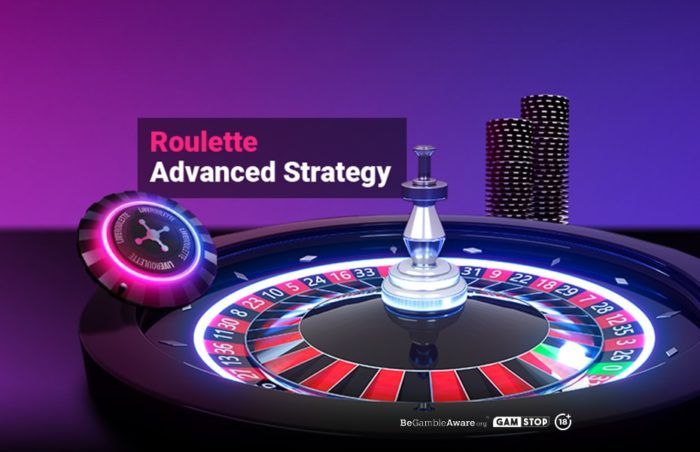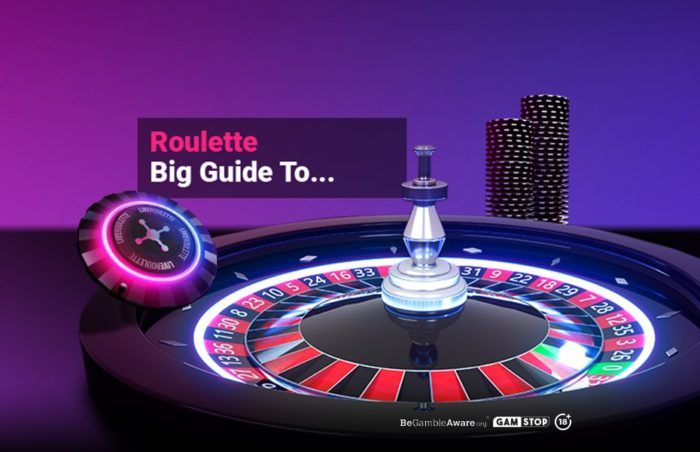Roulette Strategy And Winners
Contents
- Introduction To Basic Roulette Strategy
- What Is A Progressive Roulette Betting Strategy?
- What Is A Non-Progressive Roulette Betting Strategy?
- Why Most Roulette Strategies Might Not Work
- The Most Successful Roulette Winners Revealed
Introduction To Basic Roulette Strategy
Roulette is one of the oldest and most popular casino table games. Dating back to the 17th and 18th centuries, it’s certainly enchanted millions around the world through the years. Many players have tried to devise a methodology to ‘beat’ the game of roulette. After all, the game itself is simple enough, right? Guess the winning number of the next spin correctly and win lots of money. It sounds easy in theory, but in practice it’s nowhere near as straightforward.
As avid roulette fans ourselves, we’ve often wondered whether betting strategies existed that could tip the balance in favour of the player at the online roulette table. That’s why we’ve decided to review the most popular roulette strategies that players hang their hat on at the tables.
Why People Use Strategies To Play Roulette
Although roulette is purely a game of chance, the reality is that you could use a roulette strategy to improve your chances of winning and maximising your bankroll. But there’s never a guarantee. Some of these strategies are deemed aggressive, giving you a chance to reap a bigger reward, while others are considered more conservative, aimed at helping you amass smaller, more consistent payouts.
Just by putting a roulette strategy in place it’s a good way of helping you feel in control of your decision-making at the tables. It’s a structure that you can stick to all the way, helping you to make sense of your staking and betting choices.
The Most Popular Roulette Strategies
The Martingale System
The Martingale roulette strategy requires you to double your next bet after a losing bet. The aim of the Martingale system is to claw back the losses from the previous spin and still bag a small profit by doubling down on the next spin – and winning it.
Let’s say that you place a €10 bet on the next spin being a ‘red’ number. If the result of the spin is either a black or green zero, you’ll double your stake to €20 on red for the next spin. Keep doubling your stake until you land a red number. Once you land a red, reduce your stake back to your original €10. Providing you have a big enough bankroll to absorb losses on black and zero, it could be possible to recoup your losses and leave the table a winner.
The Fibonacci System
Inspired by the Italian mathematician and his number sequencing from the 19th century, this system requires you to add the stakes of your previous two bets together for the next spin. It’s believed that betting this way can allow you to bag a profit even if you lose more bets than you win.
The Fibonacci sequence is easy: each number is the sum of the previous two:
1, 1, 2, 3, 5, 8, 13, 21, 34, 55, 91 and so on.
To bet on roulette using the Fibonacci system, you’ll have to keep track of your previous two bets and add them together for your next spin. If you normally wager €10 per round, start with €10 for your first two bets, then increase it to €20, followed by €30, €50, €80 and so on. Once you get a winning number, return to the initial €10 stake. The Fibonacci roulette strategy is a handy way to build your bankroll steadily without epic peaks and troughs.
The Reverse Martingale System
As the name suggests, this system is the opposite of the Martingale strategy. Instead of doubling your stake after a loss, the Reverse Martingale strategy requires you to halve it after a loss and double after a win, with the aim of capitalising on winning streaks and minimising damage during losing ones.
Let’s say you placed a €10 bet on red and it won. You’d then double your stake to €20 on red again. If it lands on red again, you would double your stake to €40. Let’s say the result of the next spin is black. You would then halve your stake for the next spin to €20.
The Labouchere System
The Labouchere system might be the most appropriate roulette strategy for players that consider the Martingale approach to be a bit risky for their playing style. The Labouchere system is somewhat complex in terms of its rules and is deployed by those that prefer placing outside bets on even-money outcomes such as Red/Black or Odd/Even.
First and foremost, you need to decide your target profit. For argument’s sake, let’s say this is €10. You’ll then need to create a sequence of numbers adding up to ten:
1-1-2-2-1-1-2
Every time you place a bet at the roulette table, your stake should equal the sum of the first and last number in your sequence. Using the sequence above, our first bet would be worth €3. If your bet wins, you cross off the first and last numbers from your sequence. If your bet loses, you add the amount you just staked to the end of your sequence:
1-1-2-2-1-1-2-3
This way, your next bet would be worth €4 (the sum of the first and last number in the sequence). The same rules apply after each bet, win or lose.
The James Bond System
This system was devised by the author of the 007 series, Ian Fleming. His somewhat risky approach mirrors that of James Bond himself, requiring wagers on the higher numbers on the wheel from 13 through to 36, with cover on the single zero for insurance.
This system is only suitable for European or French roulette tables that operate with only a single zero.
It also requires a minimum bankroll of €200, something you’ll want to consider carefully before embarking upon it. That’s because it starts with the following bets:
1. €140 bet on high numbers from 19 to 36
2. €50 bet on numbers 13 to 18
3. €10 bet on zero (your insurance bet)
If the ball lands in pockets numbered 19 to 36, you win €80 profit. If the ball lands on a pocket numbered 13 to 18, you win €100 profit. If the ball lands on the zero pocket you win €160. If the ball lands on a pocket numbered one to 12, you’ll lose the full €200.
The D’Alembert System
The D’Alembert strategy is another risk-averse approach to roulette betting systems. Instead of doubling or halving after losing or winning spins, you simply increase the size of your stake by one unit after a loss and decrease it by one unit after a win.
Let’s say you normally bet with €10 stakes. If you win your first bet, increase your second wager by one unit to €11. If you win your second bet, increase your third wager by one unit to €12. If your third bet loses, decrease your fourth wager by one unit to €11.
What Is A Progressive Roulette Betting Strategy?
Given the sheer volume of roulette strategies available, it’s important to be able to categorise them. The best way is to categorise them as either progressive or non-progressive betting systems. Let’s explore what we mean by a progressive roulette betting strategy.
Progressive approaches to roulette betting are designed to have an element of stake progression after each spin. What do we mean by stake progression? Increasing or decreasing the size of your stake depending on the outcome of the previous spin. The Martingale system is one of the easiest examples of a progressive roulette betting strategy. That’s because this system simply asks that you scale up your stake after a loss and scale it down after a win.
There are pitfalls to progressive betting systems such as the Martingale system. First, it’s a very risky approach. Although you might be playing the percentages or probabilities, the reality is that it’s possible to experience a spate of consecutive losses. If you start from betting a single unit per spin, after just six losing spins, you could find yourself staking as much as 32 units to try and win it all back. That’s why both the Martingale and Reverse Martingale systems are known as ‘steep’ progressive strategies, and not recommended for roulette newbies.
The Reverse Martingale system, also known as the Paroli system, is also deemed a progressive betting strategy. The difference being that you’re required to double your stake size after every winning spin rather than losing spin, to try and maximise any possible ‘hot’ winning streaks. This makes the Paroli system a ‘positive’ progressive system too. That’s because the strategy is designed to keep losses to a minimum during losing runs. Meanwhile the original Martingale system is a ‘negative’ progressive approach, given that it involves doubling your stakes as you lose based on the theory that you’ll land a winning spin eventually.
Progressive roulette strategies could be useful if you plan on placing even-money bets. These have a probability of as close to 50% as possible and are the quickest and easiest way to compensate for all your previous losses.
The D’Alembert system, which increases and decreases stakes by a single unit after winning and losing spins, is more of a ‘flat’ progressive strategy. This approach is better suited to those who prefer placing inside bets, perhaps on specific numbers or clusters of numbers. Your strike rate may not be as high as it could be with outside bets, but when you do land a winner, you may even rake in more money than what you’ve lost overall.
What Is A Non-Progressive Roulette Betting Strategy?
A non-progressive approach to your roulette betting means that you don’t stick to increasing and decreasing your stake based on wins or losses. Instead, you simply choose to keep your stake the same throughout your entire gaming session.
A good example of a non-progressive roulette system would be to bet on neighbouring numbers on the roulette wheel. For instance, you might choose to bet on a cluster of four or five numbers adjacent to one another on the wheel. This way, if the roulette ball does drop the way of your chosen numbers, you’re more likely to land it in one of your selected pockets even if the ball bounces around.
Of course, the most typical forms of non-progressive betting would be to change the numbers and outside bets you bet on with each spin, randomising the outcome of your betting with little to no strategy.
Why Most Roulette Betting Strategies Might Not Work
A roulette strategy cannot help you ‘beat’ the game or any other random casino game for that matter. Whenever a casino game has a house edge factored in, each bet that a player makes will always have that edge attached; it is inescapable.
The benefit of some roulette strategies is that they might be able to prolong your bankroll or even allow you to prosper during ‘hot’ short-term winning streaks.
Worry not though, just because a casino has an edge on every bet you can make at the roulette table doesn’t mean you cannot win at times. Winning at roulette is all about chance – the strategies you can employ are designed to limit the damage of the house edge to your bankroll. A tip might be to look out for French roulette games that offer the En Prison or La Partage rule on even-money outside bets. These help to lower the house edge further so that you only lose half your stake when the single zero lands. Some tables will even allow your stake to ride on the next spin free of charge.
The Most Successful Roulette Winners Revealed
- Charles Wells
One of the biggest roulette winners of all-time dates back to the late 19th century. A man named Charles Wells took to the streets of Monte Carlo and visited its now world-famous casino to enjoy a session of roulette. He would end up going on a ludicrous winning streak of 23 wins out of 30 spins, winning almost one million francs in a single evening. Wells wasn’t content with that win and returned to try his luck many months later. Sure enough, he managed to win over a million francs second time round. Despite the casino’s suspicions, it was discovered that Wells had won yet again through pure luck.
- Ashley Revell
British man Ashley Revell sold his life possessions to accrue a stake worth US$135,000 to place on a single wager at the roulette table in Las Vegas. He flew out to Nevada and many journalists and cameramen were present as he entered the Strip to double his stake and come away with US$270,000 that would eventually be used to establish an online poker room.
- Chris Boyd
Fellow Brit Chris also took the decision to try and win big at the roulette tables of Las Vegas. Boyd saved up US$220,000 over the course of three years to place a bet at Binion’s Horseshoe Club in Downtown Las Vegas. He placed all of his stake on an even-money red and, sure enough, it landed on red seven.
- Sir Philip Green
Retail tycoon Sir Philip Green set foot into Les Ambassadeurs casino back in 2004 and left at the end of the evening some €2 million richer. Mr Green placed a string of straight bets and even-money outside bets, eventually taking the London casino for a seven-figure sum. It’s those with bottomless pockets of cash like Mr Green that the casinos are wary of most.
Put These Strategies To The Test And Play Roulette Online At LiveRoulette
Our live dealer roulette tables combine the very best aspects of a land-based roulette game with a state-of-the-art, digital experience. With no more need for computer-generated visuals for video roulette, you can play roulette online with us on our Canadian online casino and watch a real table and wheel via a high-definition video feed in real time. Join today to discover how live roulette puts you at the heart of the game!
18+ | begambleaware.org | Gambling can be addictive, please play responsibly. Terms & Conditions apply.









